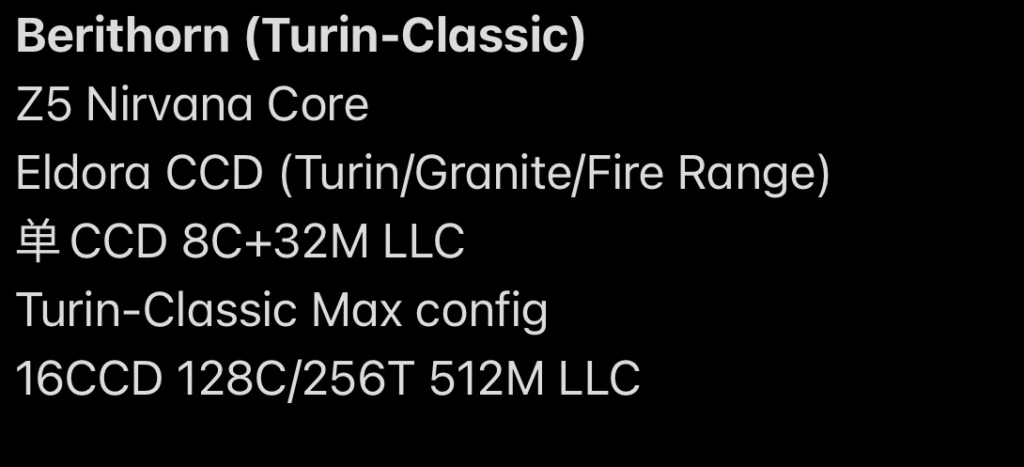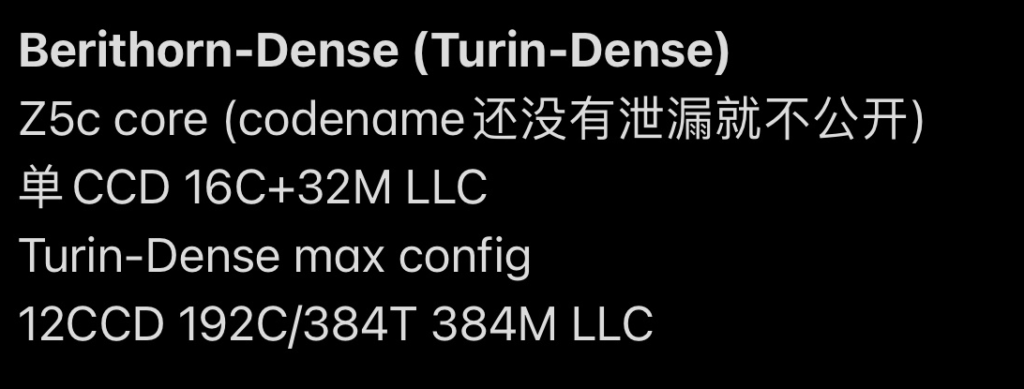AMD Zen5-Based Turin Server Specifications Leaked

HXL, a renowned and well-known hardware leaker in the industry has shared a link that highlights AMD’s plans for Zen5. More specifically, we are looking at AMD’s server offerings based on Zen5, also known as Turin. Zen5 for servers, Turin will succeed Genoa and should arrive as the EPYC 9004 series of processors.
AMD has diversified its server offerings for various segments. We currently have Genoa Classic, Genoa-Dense (Bergamo), and Genoa-X, each suiting different needs. Much like Genoa, Turin will also receive the same treatment, being divided into 3 categories.
Turin Classic
First, let’s look at Turin Classic. This lineup of CPUs will most probably be unveiled earlier than the other two variants. Cores based on the Zen4 microarchitecture were codenamed ‘Persephone‘. Zen5 cores will be called ‘Nirvana‘. Similarly, the CCD for Zen5 SKUs should be termed ‘Eldora‘, though we probably won’t see this name used much.

AMD will retain its original 8-core per CCD configuration for Zen5. Turin Classic is expected to offer CCDs packed with 8-cores and 32MB of LLC (Last Level Cache). As such the maximum configuration is up to 128 cores / 256 threads with a whopping 512MB of LLC.
For context, Genoa currently offers 96 cores across 12 CCDs with a total of 384MB of LLC. These leaked specs for AMD’s Turin show a decent on-paper improvement in performance. As per this leak, AMD has increased the cache for Turin Classic by around 33% (384MB->512MB).
Turin Dense
Turin Dense is targeted for dense environments, featuring a lot of small cores. This is the direct successor to Bergamo, which currently offers 128 Zen4c cores. Turing-Dense goes up to 192 cores across 12 CCDs, for 16 Zen4c cores per CCD. The LLC also increases from 256MB to 384MB, which is a 33% increment.

Turin-X
Turin-X is similar to Turin Classic as far as the core architecture is concerned. However, these CPUs are jam-packed with cache, thanks to AMD’s proprietary X3D cache stacking technology. The cache has increased from 1.1GB to 1.5GB. If this leak is true, then AMD is offering almost 50% more cache with Turin-X.

Power Consumption of GNR & Turin
Furthermore, the leak mentions that Intel’s 3nm-based Granite Rapids and AMD’s Turin are expected to hit upwards of 500W of power. The EPYC 9654 (Genoa Classic) consumes 360W, for some context.

Summary
This AMD Turin leak has cleared up a lot of misconceptions regarding the CCD design and core counts. We expect to see Turin arrive sometime in 2024, alongside Granite Rapids.
Intel and AMD are planning to go all out next year with their server offerings. Since Intel is expected to shift to a new architecture and a bleeding-edge node, AMD has to remain competitive. Do you think Granite Rapids can give Intel the upper hand against AMD? Tell us in the comments below.
Source: Weibo





